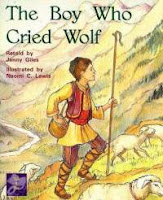 Most
Christmas traditions, characters and images are known to us. Starting sometime
shortly after Halloween, we are surrounded by Santa’s, Scrooges, lights and
music. Popular modern customs of the holiday include gift giving, Christmas
music and carolling, an exchange of Christmas cards, church celebrations, a
special meal, and the display of various decorations, including Christmas
trees, lights, nativity scenes, garlands, wreaths, mistletoe, and holly.
Most
Christmas traditions, characters and images are known to us. Starting sometime
shortly after Halloween, we are surrounded by Santa’s, Scrooges, lights and
music. Popular modern customs of the holiday include gift giving, Christmas
music and carolling, an exchange of Christmas cards, church celebrations, a
special meal, and the display of various decorations, including Christmas
trees, lights, nativity scenes, garlands, wreaths, mistletoe, and holly.
Traditionally,
Christmas is an annual commemoration of the birth of Jesus Christ, celebrated
on December 25 as a religious and cultural holiday. Biblical accounts state
Jesus was born to Mary, assisted by her husband Joseph, in the city of
Bethlehem. According to popular tradition, the birth took place in a stable,
surrounded by farm animals (although neither of the two biblical accounts state
a stable specifically, one does state that the child was placed in a manger, a
feeding trough for the animals.)
If this
is how it all started, how did hanging a stocking by the fireplace become a
tradition at Christmas? Why decorate an evergreen tree to commemorate the birth
of Jesus? I wanted to take a look at some traditions that may seem a little
disassociated with Christmas.
Why do we
give gifts at Christmas?
Exchanging
gifts is one of the core aspects of modern Christmas celebration. Historically,
gift giving was common in the Roman celebration of Saturnalia, an ancient
festival which took place in late December and may have influenced Christmas
customs. Christmas gift-giving during the Middle Ages was usually between
people with legal relationships, such as tenant and landlord. Later, Christmas
gift giving was banned by the Catholic Church due to its suspected pagan
origins. It was later rationalized by the Church on the basis that it
associated St. Nicholas with Christmas, and that gifts of gold, frankincense
and myrrh were given to the infant Jesus by the Magi (wise men) in the bible.
Why do we
hang stockings?
 St
Nicolas (a progenitor of Santa Claus) was a Christian priest in 4th century AD
Greece. A wealthy person who travelled the country, he had a reputation for
secret gift-giving, such as putting coins in the shoes of those who left them
out for him. St Nicolas thus became the model for Santa Claus, whose modern
name comes from the Dutch Sinterklaas, itself from a series of elisions
and corruptions of the transliteration of "Saint Nikolaos". (Of note:
At the Reformation in 16th–17th century Europe, many Protestants changed the
gift bringer to the Christ Child or Christkindl, corrupted in English to
“Kris Kringle”.)
St
Nicolas (a progenitor of Santa Claus) was a Christian priest in 4th century AD
Greece. A wealthy person who travelled the country, he had a reputation for
secret gift-giving, such as putting coins in the shoes of those who left them
out for him. St Nicolas thus became the model for Santa Claus, whose modern
name comes from the Dutch Sinterklaas, itself from a series of elisions
and corruptions of the transliteration of "Saint Nikolaos". (Of note:
At the Reformation in 16th–17th century Europe, many Protestants changed the
gift bringer to the Christ Child or Christkindl, corrupted in English to
“Kris Kringle”.)
There was
a nobleman whose wife had died, leaving him and his daughters in despair. After
losing all his money in bad inventions, his family had to move into a peasant’s
cottage. As the daughter’s became of marrying age, the father became more
depressed as he would be unable to furnish each daughter with a dowry for them
to marry. St Nicolas wanted to help the family, but he knew the father was too
proud to accept any charity.
One day
after washing their clothing, the daughters hung their stockings over the
fireplace to dry. That night, when all were asleep, St Nicolas crept down the
chimney and dropped a bag of gold into each of the daughters’ stockings. When
the girls and their father work up the next morning, they found the bags of
gold coins and were overjoyed. The girls were able to marry and live happily
ever after.
This led
to the custom of children hanging stockings or putting out shoes, awaiting
gifts from St Nicolas. Cultural variations abound. In France, children place
their shoes by the fireplace. In Holland, children fill their shoes with hay
and a carrot for the horse of Sintirklass. Italian children leave their
shoes out the night before Epiphany for La Befana, the good witch. And
in Puerto Rico, children put greens and flowers in small boxes and place them
under their beds for the camels of the Three Kings.
Why do we
kiss under the mistletoe?
We find
the source of "kissing under the mistletoe" in Celtic rituals and
Norse mythology. In Gaul, the land of the Celts, for instance, the Druids
considered it a sacred plant. It was believed to have medicinal qualities and
mysterious supernatural powers. They believed that a potion prepared from
mistletoe would make sterile animals fertile, and that the plant was an
antidote for any poison.
In
Scandinavian mythology, mistletoe was the sacred plant of Frigga, goddess of
love and the mother of Balder, the god of the summer sun. Balder had a dream he
was going to die. Frigga, alarmed by this, went to air, fire, water, earth, and
every animal and plant seeking a promise that no harm would come to her son.
But Loki the Trickster saw that Frigga had overlooked one plant, as it grew
neither on nor under the earth but in the trees: the mistletoe. Loki fashioned
an arrow with mistletoe in the tip, which was used to strike Baldur dead. After
three days, Baldur was restored from the dead by Frigga. The tears she shed for
her son turned into the pearly white berries on the mistletoe plant. In her
joy, she kissed everyone who passed beneath the tree on which the mistletoe
grew. The story ends with a decree that whosoever stands under the mistletoe,
no harm should befall them; only a kiss, a token of love. Mistletoe was
thereafter considered a plant of peace, under which enemies could declare a
truce or warring spouses kiss and make-up.
Later,
the eighteenth-century English credited not with miraculous healing powers, but
with a certain magical appeal called a “kissing ball”. At Christmas time a young
lady standing under a ball of mistletoe, brightly trimmed with evergreens,
ribbons, and ornaments, cannot refuse to be kissed. Such a kiss could mean deep
romance or lasting friendship and goodwill. If the girl remained un-kissed, she
could expect to not marry within the following year. In some parts of England
the Christmas mistletoe is burned on the twelfth night lest all the boys and
girls who have kissed under it never marry.
Why do we
decorate a tree?
 Evergreens
have been associated with seasonal celebrations since ancient times by various
nationalities and religious groups around the globe, including the Egyptians,
the Romans, the Druids, the Vikings, the Anglo-Saxons, the Spaniards and the
Slovaks. These celebrations usually occurred around the time of the winter
solstice, and the evergreens (be they palm rushes or fir trees) were considered
a symbol of the triumph of life over death or of everlasting life.
Evergreens
have been associated with seasonal celebrations since ancient times by various
nationalities and religious groups around the globe, including the Egyptians,
the Romans, the Druids, the Vikings, the Anglo-Saxons, the Spaniards and the
Slovaks. These celebrations usually occurred around the time of the winter
solstice, and the evergreens (be they palm rushes or fir trees) were considered
a symbol of the triumph of life over death or of everlasting life.
In the
14th century, when very few people knew how to read, churches mounted “miracle
plays” to explain the stories of the bible to the populace. These plays were
held at special times of the year in accordance with the Christian Calendar of
Saints. Every December 24, which was Adam and Eve’s Day, the play depicted how
Eve was tempted by the serpent, how she picked the apple from the tree and how
the couple was expelled from Paradise. But finding a live fruit-bearing apple
tree in December proved difficult. In Germany, they solved the problem by cutting
down an evergreen tree and tying apples to its boughs. They also tied round
white wafers to symbolically represent the redemption brought by Jesus. Before
long, many German families were setting up Paradiesbäume or Paradise
Trees in their own homes, and this custom persisted long after the miracle
plays disappeared. Over time, more edible items decorated the tree, such as
gingerbread cookies (in the shapes of hearts, bells, stars and angels), gilded
nuts, and marzipan candies. Gradually, metal and wood ornaments replaced some
of these edible decorations.
The first
recorded Christmas tree in Canada was set up in Sorel, Quebec in 1781 by Baron
Friederick von Riedesel. He selected a handsome balsam fir from the forests
that surrounded his home and decorated it with white candles.
Bonus
question: What is and why do we celebrate Boxing Day?
Boxing
Day is a bank or public holiday that occurs on December 26, or the first or
second weekday after Christmas Day, depending on national or regional laws. It
is observed in many Commonwealth Nations, including Australia, Canada, New
Zealand, and the United Kingdom. In Ireland, it is recognized as St. Stephen's
Day or the Day of the Wren. In South Africa, Boxing Day was renamed Day of
Goodwill in 1994.
The
etymology of Boxing Day is unclear. There are many possible origins. One can be
found in the carol “Good King Wenceslas.” According to the song, Wenceslas, who
was Duke of Bohemia in the early 10th century, was surveying his land on St
Stephen’s Day (December 26) when he saw a poor man gathering wood in the middle
of a snowstorm. Moved, the King gathered up surplus food and wine and carried
them through the blizzard to the peasant’s door.
The
Church of England may have started Boxing Day. During Advent, Anglican parishes
displayed a box into which churchgoers put their monetary donations. On the day
after Christmas, the boxes were broken open and the contents distributed among
the poor, giving rise to the term Boxing Day. Or…
In the
UK, it was a custom for tradesmen to collect "Christmas boxes" of
money or presents on the first weekday after Christmas as thanks for good
service throughout the year. This custom is linked to an older English
tradition: in exchange for ensuring that wealthy landowners' Christmases ran
smoothly, their servants were allowed to take the 26th off to visit their
families. The employers gave each servant a box containing gifts and bonuses
(and sometimes leftover food) and this came to be known as Boxing Day.
Whatever
your traditions, a Happy Christmas to all who choose to mark the day!
"One of the most glorious messes in the world is the mess created in the living room on Christmas day. Don't clean it up too quickly." ~Andy Rooney
"One of the most glorious messes in the world is the mess created in the living room on Christmas day. Don't clean it up too quickly." ~Andy Rooney

































